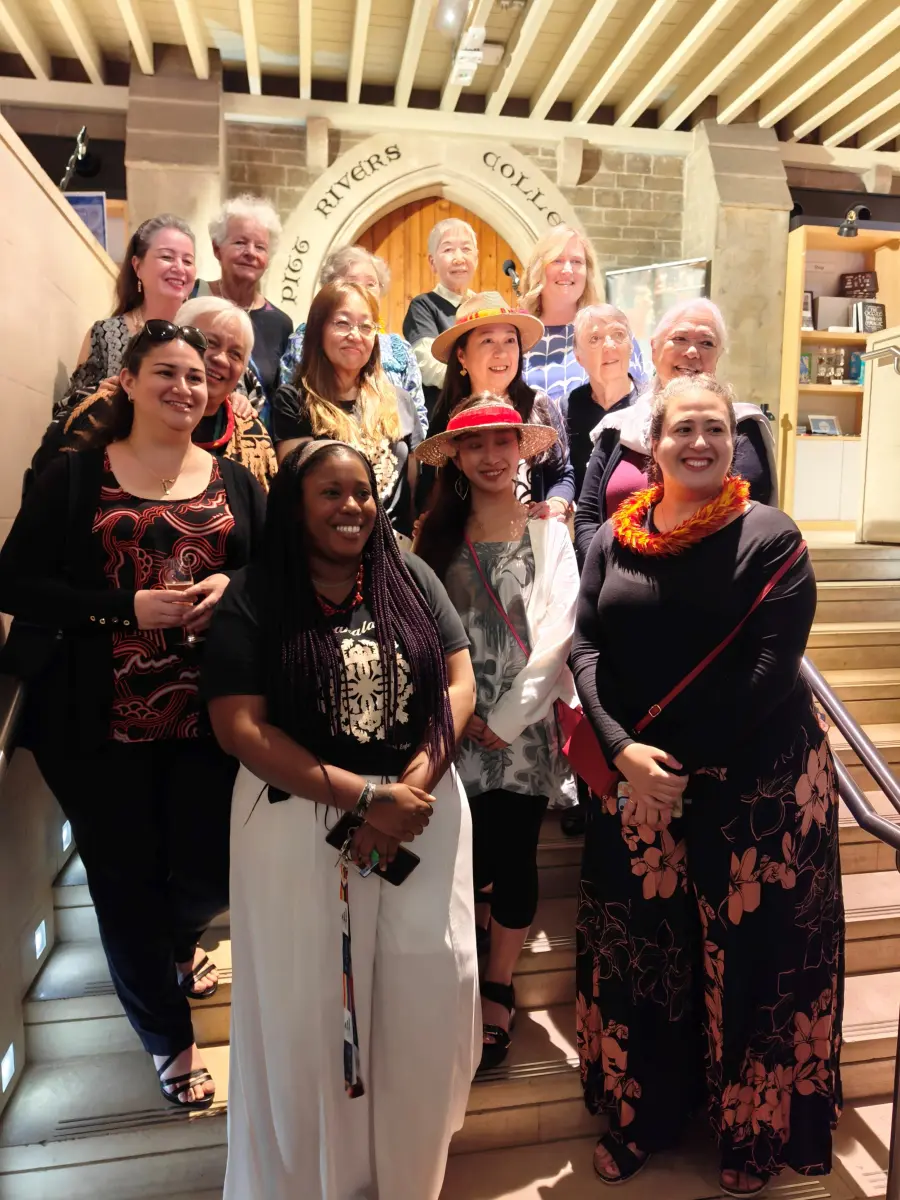Born with only one hand, Althea Poakalani Serrao could only dream of continuing her family’s legacy of quilting.
As a child, she watched her grandmother craft these large, intricate blankets, yearning to do the same. But it wasn’t until she was an adult and met her husband, John Serrao, that her dream came true. He painstakingly adapted her family’s patterns and resized the frames, making them easier for her to manage. Together, they transformed their family legacy into a celebrated art form, with their quilts now recognized and renowned both locally and internationally.
Inspired by their parent’s love story, Cissy and Raelene Serrao perpetuate the family tradition through their quilting hui, Poakalani & Co., a hui dedicated to preserving and teaching Hawaiian quilting. They offer classes and downloadable patterns and showcase their quilts across the globe.
In the summer of 2024, some 15 Poakalani & Co. pieces were commissioned by the Pitts-Rivers Museum in Oxford, England. Now a part of their permanent collection, they are featured in the “Ma uka to Ma kai: Back to the Future with Ahupuaʻa,” an interactive exhibit that details the ahupuaʻa system.

The Poakalani quilters travelled together to view their quilts at the Pitt Rivers Museum.
The Poakalani quilters travelled together to view their quilts at the Pitt Rivers Museum.
Standing in the gallery, thousands of miles from home, the quilters felt a flood of emotion. Having their work in front of an international audience reminded them of how strong traditions are.
“To be so far from Hawaiʻi, sharing the tradition that we absolutely love, is overwhelming,” Cissy said. “It’s such an honor to see my dad’s designs and it all started because of my mother.”
The history of Hawaiian quilting is woven into the fabric of the islands. In the 1800s, missionaries taught Hawaiian women patchwork quilting. Making it their own, the craft flourished into the symmetrical, silhouette applique known today with patterns inspired by ʻāina. Quilts became a medium for cultural expression, commemorating the lifestyle and heritage of Hawaiʻi.
Many scholars believe that aliʻi were some of the first to quilt, with symbols like kahili, maile lei, kahi and peʻahi reflecting their status and honor. After the overthrow of the Hawaiian Kingdom in 1893, quilting became more than an art – it was a quiet form of protest. Quilters incorporated the Hawaiian flag into their designs, often on reversible throws, as a sign of covert resistance. One of the most iconic examples are protest quilts, kuʻu hae aloha, that symbolize aloha ‘āina and ea.

A ku’u hae aloha quilt is a Hawaiian quilt showcasing the Hawaiian flag and coat of arms.
A ku’u hae aloha quilt is a Hawaiian quilt showcasing the Hawaiian flag and coat of arms.
The kaona of these patriotic pieces – of sovereignty, hope, and love for one’s people – made them prized possessions. Quilts are already a work of love and expert skill, with artisans dedicating countless hours to create meaningful designs, embedding history into each stitch.
“If you don’t know the history behind this tradition, it’s always just going to be a blanket,” Cissy said. “My father told stories through his designs and the quilters work hard to bring them to life.”
In his time, John created a series of aliʻi designs, one honoring Queen Liliʻuokalani and another for Kaʻahumanu. For years, their hui met at the Hawaiian Mission Homes, Queen Emma’s Summer Palace and ‘Iolani Palace, honing this centuries-old practice in these significant places.
Though both sides of her family were master quilters, Cissy loved dancing hula most, often running for the door while her mom sewed. It was how she connected to her culture and discovered the importance of tradition. She jokes that she didn’t pick up quilting until her “knees started to go bad.”
“Both hula and quilting bring people together,” Cissy said. “They are our sisters, our hālau. The sharing of our tradition bonds us and we become like a second family.”
Now, Cissy and Rae continue their parents’ legacy, taking over their quilting classes. Though their group is smaller, they hope to grow and keep this tradition alive by sharing the practice with a new generation of quilters.
Whenever people ask Cissy what to do with inherited quilts they can’t keep, she suggests they donate them to museums or historical societies.
That way, quilting – and the care in its craftsmanship – can continue to inspire patrons near and far.
“If we don’t share our traditions, it will die,” Cissy said. “And that applies to our people. If we don’t share who we are and what we can become, our culture will die.”
As they pass down their cherished skills and stories, Cissy and Ray carry on the art of quilting and the spirit of their kūpuna. The Serrao legacy is a reminder that cultural traditions are the threads connecting us to the past, present and future.
TAGS
native hawaiian identity,
hawaiian culture
CATEGORIES
Kaipuolono Article, Regions, Kaua’i and Ni’ihau, Wai’anae Coast, ‘Ewa, Waialua, Kona, O’ahu, Ko’olau, Maui, Moloka’i and Lana’i, West Hawai’i, East Hawai’i, Themes, Culture, Community, Employee ‘Ohana, Ka ʻohana Kamehameha, KS Announcements
Print with photos
Print text only










